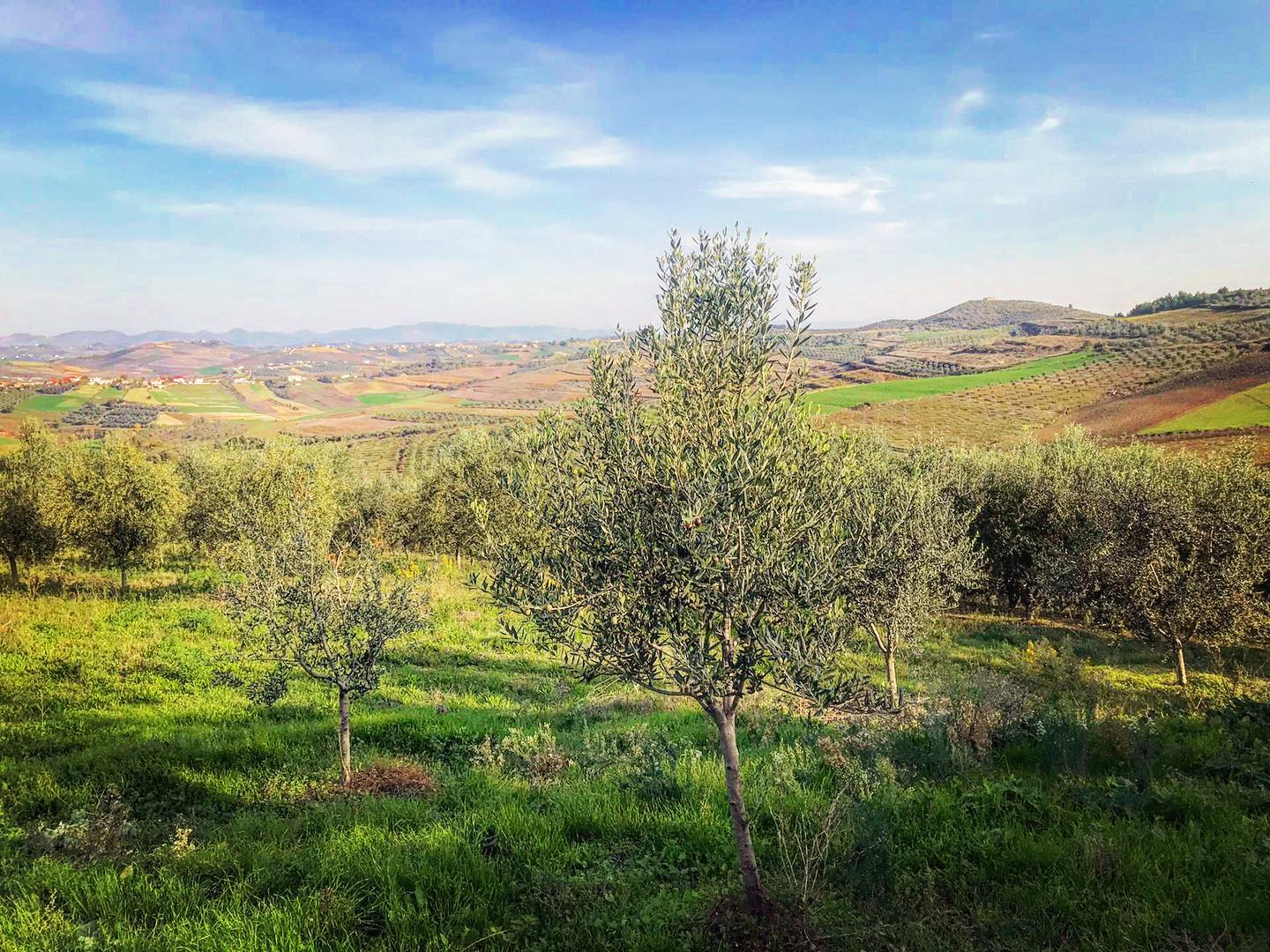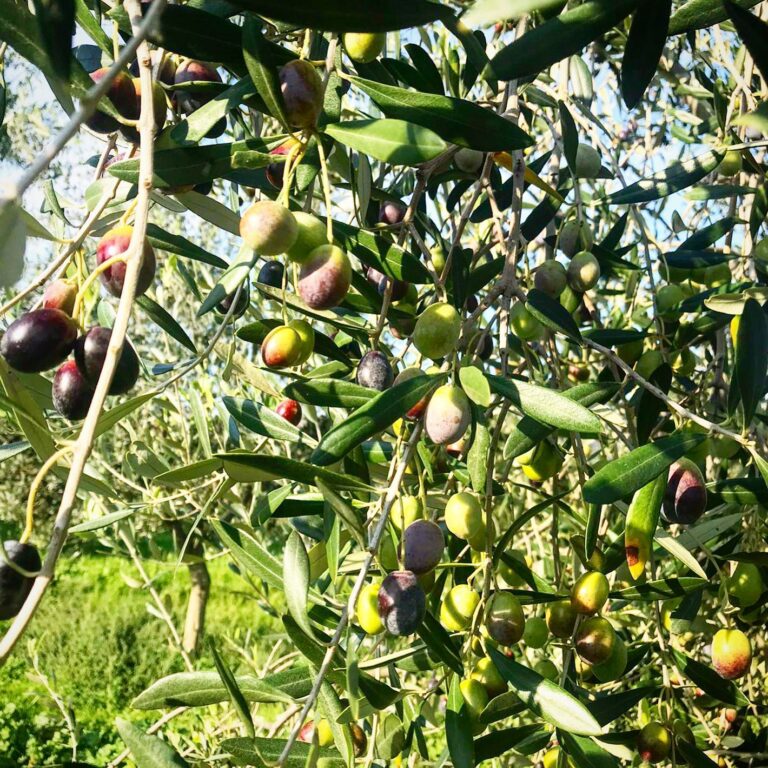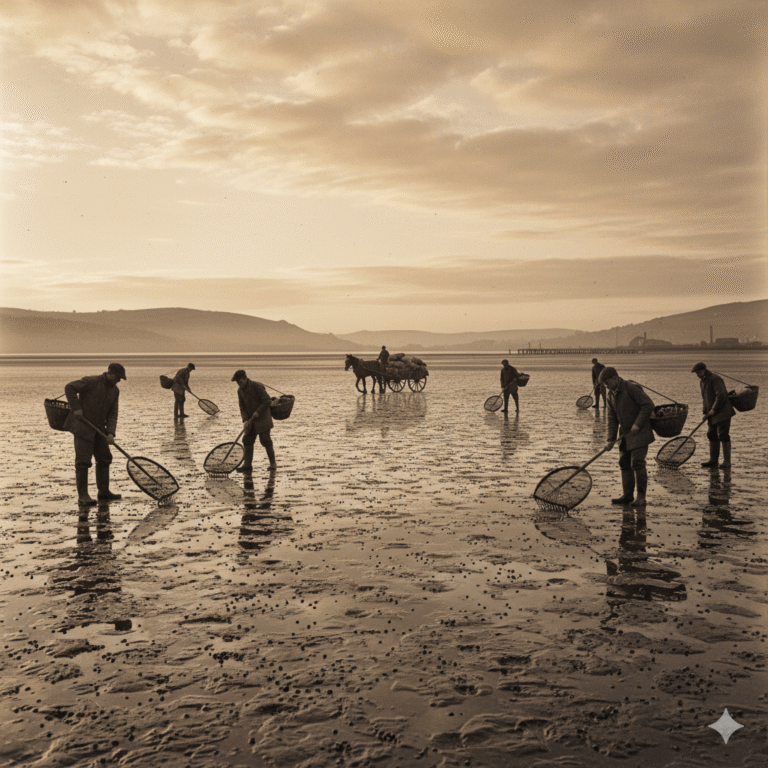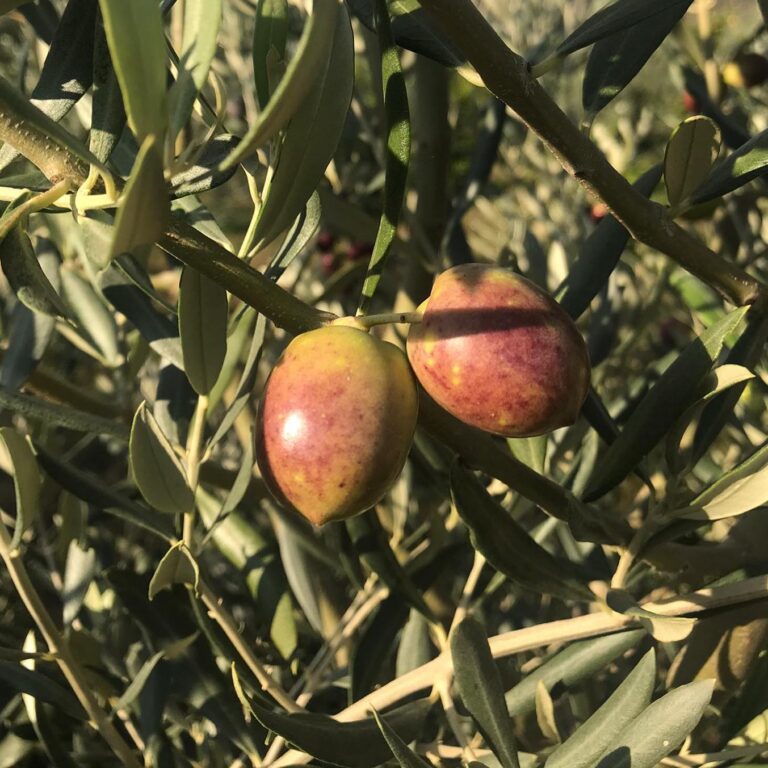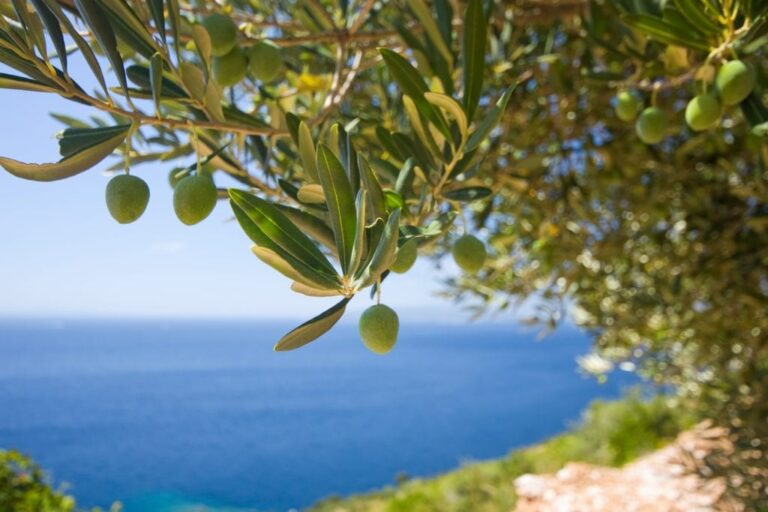Lushnjë, Albania — A History of Land, Liberty, and the Olive
Lushnjë is a city whose history is inextricably linked to the land upon which it sits: the fertile but once-treacherous Myzeqe Plain. From its ancient origins as a small, continuously inhabited settlement, Lushnjë evolved through periods of geopolitical contestation and foreign control, remaining a minor town for centuries. Its status was dramatically elevated in 1920 when it became the provisional capital and the site of a pivotal congress that laid the constitutional groundwork for modern Albania. The city’s subsequent history under the communist regime was marked by a radical, state-led transformation of its landscape, converting the swampy Myzeqe into the “Albanian Granary,” a feat achieved through massive engineering projects and, disturbingly, forced labor.
Following the collapse of communism, the region underwent a unique decollectivization process that returned land to private smallholders. This period, characterized by both economic hardship and a new spirit of enterprise, set the stage for Lushnjë’s modern resurgence as a leading agricultural hub. The region’s olive industry, in particular, stands as a testament to this resilience. Cultivation is rooted in ancient Mediterranean traditions and now benefits from modern, internationally supported initiatives. The narrative of Lushnjë’s past, defined by its struggle for self-determination and the constant effort to master its challenging terrain, is a powerful backdrop for a business rooted in its land.
Ancient and Medieval Foundations: The Myzeqe Plain as a Crossroads
Pre-Roman and Roman Roots
The historical record indicates that the area around Lushnjë has been inhabited for millennia. Archaeological investigations have unearthed the oldest traces of civilization in the hills near the city, dating back to the Eneolithic period, approximately 2900–2100 BC.
Excavations have revealed simple burial sites containing a rich inventory of archaeological materials, including fragments of vessels, such as the bottoms of skyphos and amphorae, as well as intact objects like lekythoses and a Gutus type vessel, which was a child’s feeder. These findings suggest a sedentary population with domestic life and, at the very least, a rudimentary social structure.
Later discoveries on Vain Hill, including a mosaic tassel and ceramic fragments, led specialists to believe that an early basilica was built there between the 4th and 6th centuries AD. This basilica, which marked a “place of worship,” provides evidence of an established, small community during Late Antiquity. The presence of a settled, Christian community suggests that despite its small size, the area was not an isolated frontier but was connected to wider cultural and trade networks, likely influenced by the nearby Via Egnatia, the major Roman overland route that connected Dyrrhachium (modern-day Durrës) to Constantinople.
The archaeological record, though limited, confirms a continuous human presence that predates the city’s official founding and establishes a deep historical context for its modern existence.
A Geopolitical Pawn in the Middle Ages
Throughout the medieval period, the Lushnjë area, situated within the Myzeqe Plain, was a highly contested territory, reflecting a dynamic of perpetual instability. After the fall of the Roman Empire, the region became part of the Byzantine Empire but suffered devastating raids by Visigoths, Huns, and Ostrogoths in the 4th and 5th centuries. Slavic migrations in the 6th and 7th centuries further disrupted life, forcing Albanians and Vlachs to retreat to mountainous regions or into Byzantine Greece. The Myzeqe area, known as Kutmichevitsa, was later incorporated into the Bulgarian Empire in the mid-9th century, becoming an important cultural center.
As Byzantine authority waned in the late 11th and 12th centuries, the region became a battleground in the Byzantine-Norman wars. Lushnjë’s location at a key crossroads made it a strategic prize. Later, the area was briefly conquered by the Serbian ruler Stephen Dushan in the 14th century, but local Albanian families, most notably the Muzaka family, quickly reasserted control as the Serbian Empire fragmented.
The toponym Musachia, the earliest recorded name for the region, first appeared in 1417, deriving from the Muzaka family name. These frequent shifts in control from one empire or principality to another created a volatile environment that would have made sustained, long-term agricultural investment difficult and suppressed the development of large, stable settlements.
The Battle of Savra (1385) and the Rise of the Ottomans
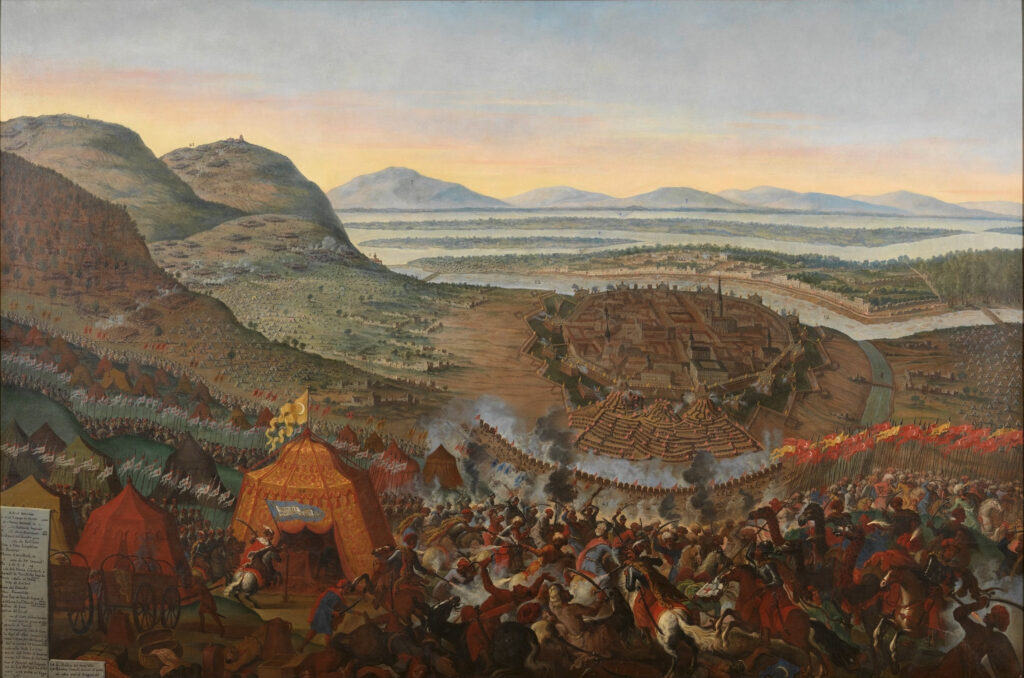
The geopolitical volatility of the Myzeqe Plain culminated in a single, defining event that forever altered the region’s trajectory. In 1385, the Battle of Savra was fought on a field just 3 km from modern-day Lushnjë. The conflict was not a direct invasion by the Ottoman Empire but was instigated by a local power struggle. Karl Thopia, the ruler of the Principality of Albania, invited the Ottomans to support him in his feud against Balša II, the Lord of Lower Zeta. This single act of a local lord seeking a tactical advantage had a monumental and lasting consequence.
The Ottoman forces, led by Hayreddin Pasha, were brought in from the region of Ohrid, and their decisive victory over the much smaller Zetan army resulted in the death of Balša II. This battle established a critical foothold for the Ottomans, setting the foundation for their “centuries-long” presence in this part of the Balkans. This event explains precisely how the Ottoman Empire gained a presence in the region and transformed the Myzeqe Plain from a contested crossroads of Balkan and Italian powers into an integral part of the Ottoman administrative and economic system.
The Ottoman Epoch: From Feudalism to Agrarian Stagnation
The Timar System and Land Ownership
With the establishment of Ottoman rule, the relationship between people and the land underwent a profound transformation. The Ottoman government implemented the timar system, a form of land tenure that declared all rural agricultural land as state property, or miri. The Sultan was the ultimate owner of the land, which was then granted to military officials, known as spahis, in exchange for their service. Peasants were not landowners but inherited tenants who had the right to use the land in return for their labor and the payment of a rent or tithe.
This system had a significant impact on agriculture. By preventing the emergence of a strong, independent landowning class, it disincentivized long-term investment in the land by the peasantry. While some forms of private and religious land ownership existed, the dominant system tied agricultural output directly to the needs of the military and the state, suppressing widespread agrarian modernization.
The timar system was officially abolished in 1834, but its legacy continued to shape land relations in the region for decades. At the start of the 20th century, a similar system, the çiflig land tenure, still prevailed, where peasants contributed labor and produce to landlords, the state, or religious institutions.
Lushnjë’s Development as a Small Settlement
For centuries under Ottoman rule, Lushnjë remained a small, unremarkable settlement, despite its location on the Myzeqe Plain. The Ottoman register of 1431 recorded Lushnjë with a mere 15 houses and approximately 100 inhabitants. Its growth was slow; by 1679, the population had only risen to around 150 people in 17 houses, and by 1744, it had a population of about 500 in 57 houses. It was first mentioned in a European dictionary in 1830, noting its 200 houses and a population of mixed Orthodox and Muslim faiths. In 1848, the poet and painter Edward Lear visited, describing it simply as a village with inns for travelers.
The reasons for this stagnation are rooted in the natural and administrative conditions of the time. The Myzeqe Plain, a large alluvial plain, was historically a wetland, characterized by swamps and desolate land until after World War II. This made the area prone to high rates of malaria, which was a common problem in the wider region and limited its agricultural potential. The seasonal migration of the population also inhibited the creation of a stable, permanent urban center.
This combination of a naturally challenging environment and the restrictive Ottoman land policies meant that the region’s immense agricultural potential remained untapped for centuries. The land was inherently fertile, but its productivity was suppressed by both physical obstacles and a political system that offered little incentive for development.
The Birth of a Nation: The Congress of Lushnjë (1920)
A Pivotal Moment for Albanian Statehood
Lushnjë’s status was dramatically transformed in January 1920 when it became the provisional capital of Albania and the location of a congress that solidified the nation’s independence. The Albanian state, officially founded in 1912, was in disarray following the turmoil of World War I and the secret Treaty of London of 1915, which threatened to “annihilate” the country. In this climate of political uncertainty, the Congress of Lushnjë was convened as a “rescue institution” to reassert national sovereignty and to take the country’s destiny “into their own hands”.
The Congress brought together signatories of the Albanian Declaration of Independence and other key national figures. Its most significant outcomes were the election of a new government led by Sulejman Delvina and the creation of a National Council with the attributes of a parliament. It also drafted and approved a foundational document, the Statute of Lushnjë, for the functioning of the new state institutions.
Crucially, the Congress decided to declare Tirana the new provisional and then definitive capital of Albania. This assembly laid the “solid foundations for a representative government” and secured Albania’s international recognition by the League of Nations on December 17, 1920. The city’s local football club, KS Lushnja, was later named Kongresi i Lushnjës in 1927, permanently linking the city’s identity to this monumental event.
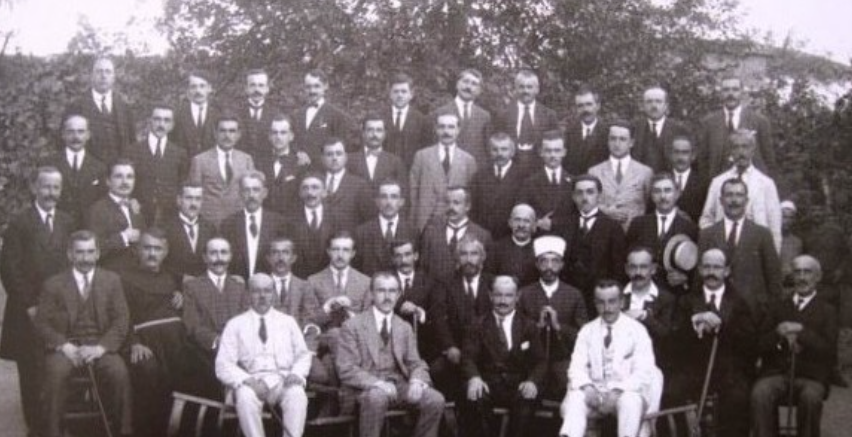
Political Instability and Agrarian Challenges
While the Congress of Lushnjë was a political success, the new nation faced significant agrarian challenges rooted in the legacy of Ottoman rule. At the turn of the century, the dominant land ownership system was the çiflig system, which functioned similarly to the Ottoman timar system. Under this model, peasants were tenant farmers, and land ownership was concentrated in the hands of landlords, the state, or religious institutions, which suppressed agricultural modernization and productivity.
The young Albanian government was preoccupied with consolidating its political power and establishing its institutions, leaving the deep-seated agrarian issues largely unaddressed. As a result, the Myzeqe Plain, despite its potential, continued to be an underdeveloped region with low-yield agricultural output. The nation’s food supply was a “perennial problem” due to primitive cultivation methods and a lack of resources. The political liberation secured at the Congress of Lushnjë was not immediately followed by economic liberation for the peasantry. This delay in meaningful land reform created a cycle of agrarian stagnation that would not be broken until the radical and often brutal changes of the communist era.
The Communist Era: Engineering a “Granary” with Human Cost
Land Reform and Collectivization
The communist government, which came to power after World War II, fundamentally reshaped the Albanian landscape and agrarian economy. The initial post-war land reform of 1946 was designed to win peasant support and increase food output. A key ceremony for this “land-to-the-tiller” reform, which expropriated land from large farms and redistributed it to small peasants, was notably held in the Lushnjë district in September 1945. This reform was a strategic political maneuver, as it reduced the share of large farms from 27% of agricultural land in 1945 to just 3% by 1954.
This initial phase was short-lived, however. The government soon pursued a more radical and complete collectivization, a core tenet of its Stalinist-style centrally planned economy. Beginning in the late 1950s, land was reorganized into large-scale collective and state farms. By 1971, individual farming had “virtually disappeared,” and private land ownership was abolished. This transition was driven by a political ideology that prioritized state control and large-scale industrialization, although it resulted in chronic food shortages for the population due to mismanagement and inefficiency.
The Myzeqe Plain as the “Albanian Granary”
The communist regime’s most ambitious project was the transformation of the Myzeqe Plain. The area had historically been a desolate, swampy wetland with high rates of malaria, which prevented its full agricultural utilization. After World War II, the government launched “massive campaigns for draining the area” and building extensive irrigation canals. These large-scale engineering projects were successful in changing the physical landscape, and the region became known as the “Albanian granary” due to its vastly increased agricultural output.
Despite this monumental physical transformation, the underlying economic system was deeply flawed. The centrally planned economy was characterized by “mismanagement and inefficiency” and was biased toward heavy industry over agriculture and consumer goods. This focus created a paradoxical situation where, despite the Myzeqe’s newfound productivity, the nation continued to suffer from chronic food shortages and a lack of vital nutrition. The communist agricultural policy was a combination of a highly successful engineering project with a failed economic model, a contradiction that would ultimately contribute to the regime’s collapse.
Concentration and Internment Camps
The success of the Myzeqe Plain’s transformation came at a profound human cost. The communist government used forced labor from concentration and internment camps to build its “granary.” Along with Fier, Lushnjë was a main district for these camps, which were located in villages such as Savër, Gradishtë, Bedat, Gjazë, Rrapëz, and Plug. When the Tepelenë Internment Camp was closed in 1954, its internees were resettled in the Myzeqe fields, specifically on “November 29 Farm,” which the internees’ labor had built.
Individuals from all walks of life, including political dissidents, “reactionaries,” and their families, were sent to these camps. A notable example is Lekë Tasi, a painter and cellist, who was exiled with his family to a Lushnjë internment camp in 1975. He was sentenced to 15 years and forced to work as a “cooperative farmer” until the regime collapsed. This history reveals that the very land that defines Lushnjë’s modern agricultural identity was reshaped through a process of political oppression and human suffering, providing a crucial and sobering context for understanding the region’s legacy.
Post-Communism: Privatization and Economic Resurgence
The Radical Decollectivization
The fall of the communist regime in the early 1990s led to a severe economic crisis in Albania, with industrial production grinding to a halt and a significant drop in GDP.15 The country’s leadership responded with a radical and unique approach to land reform. Unlike most other Central and Eastern European countries that opted for land restitution to former owners, Albania chose to distribute all collective and state farm land among rural households.11 The post-communist land reform of 1991 was, in effect, a “replay of the 1946 land reform,” but this time, it was a move toward true private ownership and a market-based economy.15
This policy led to the “complete break up” of the former state and collective farms, resulting in a landscape of small, individual farms.11 The primary driver for this decision was the need to immediately address chronic food shortages and to dismantle the collectivized system entirely. This decisive break from the past created a new agricultural structure in Lushnjë and the Myzeqe region, characterized by small-scale private farming.
A New Era of Challenges and Opportunities
The transition to a market economy was fraught with challenges. While agriculture was certain to remain the economy’s “cornerstone”, the new system was plagued by the proliferation of pyramid schemes and a weak industrial sector that continued to experience production losses. Remittances from Albanians working abroad, particularly in Greece, Italy, Germany, and the U.S., became a critical source of income, accounting for an estimated 20% of GDP in 1996.
Despite these hurdles, the new government enacted liberalizing reforms to protect free enterprise and foreign investments. Lushnjë’s economy began to recover, with significant growth in the agricultural, construction, and private service sectors. The history of forced labor was not forgotten, however. In 1996, several high-ranking communist officials, including those from Lushnjë, were sentenced for their role in the internal exile of thousands of dissidents. This period, therefore, represents a complex mix of economic rebirth, social turbulence, and reckoning with the past.
The Modern Olive Grove: A Legacy Reborn
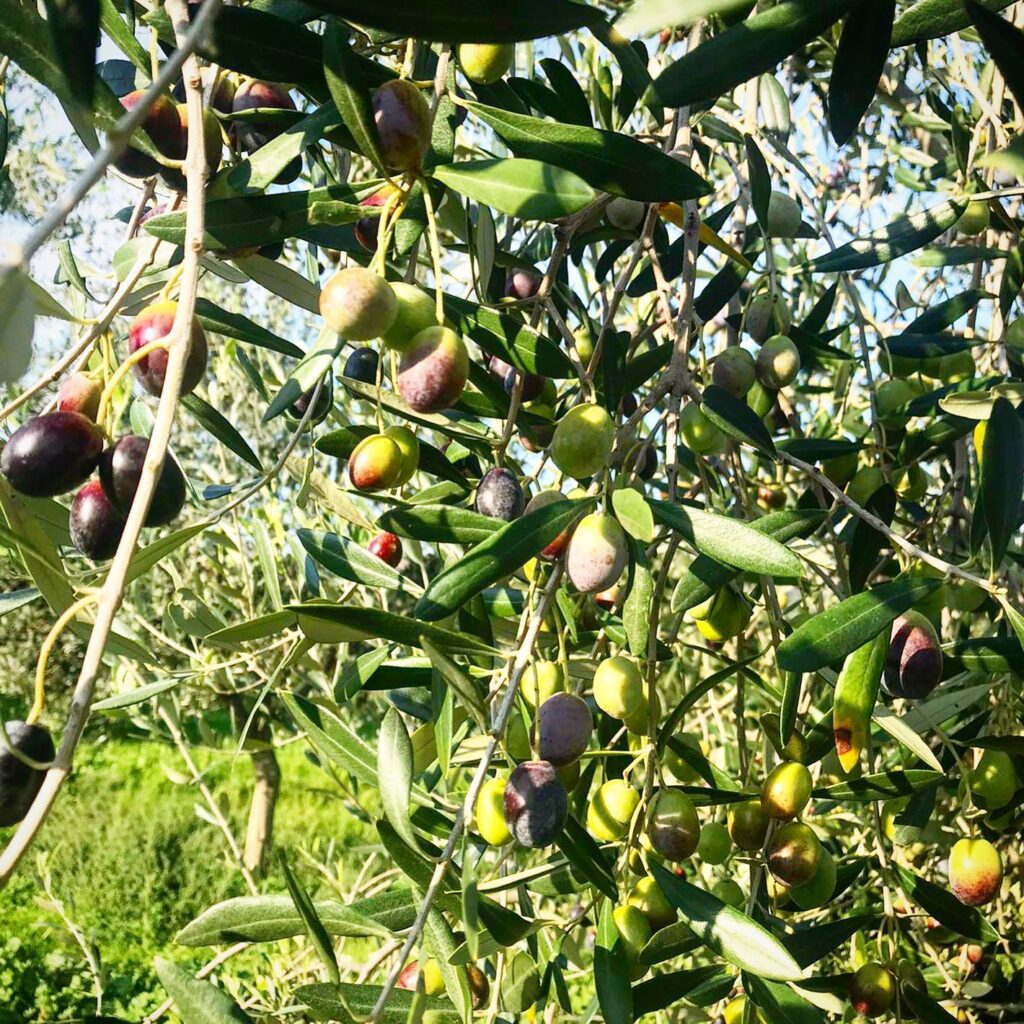
The History of Olive Cultivation
Olive cultivation in Albania is not a recent development but a continuation of an ancient tradition. The cultivation of the olive (Olea europaea) in the wider Mediterranean region dates back thousands of years, with archaeological evidence of oil production found as early as 7000 BP. Phoenician and Greek colonization spread the practice from Asia Minor to Iberia and North Africa, and olive oil became a vital trading commodity for the Romans and beyond.
Olive trees have thrived in Albania for thousands of years, and many groves have been nurtured by the same families for generations. The durability of the trees, which are long-lived and drought-resistant, made them a practical and low-maintenance form of farming. Traditionally, growers would plant olive trees alongside other crops and livestock to ensure a steady income in case of crop failure. This deep-rooted cultural and agricultural history provides a powerful legacy for modern olive producers, connecting their operations to the ancient traditions that shaped the Mediterranean world.
Varieties of the Lushnjë Region
Lushnjë is located in the Myzeqe Plain, a region known as a main provider of agricultural products to the rest of the country and for exports. The region is particularly well-suited for olive production, and Lushnjë is recognized as one of the leading olive oil-producing places in Albania. The local olive industry focuses on both native and international varieties.
The Lushnjë area falls within a primary production zone for the indigenous Kokërmadh Berati olive, a cultivar also prevalent in the neighboring regions of Berat and Fier. This variety is highly valued for its “high yield and quality,” producing some of the country’s finest table olives and olive oil. Other varieties cultivated in the wider Albanian region include the native
Kalinjot and internationally recognized cultivars such as Koroneiki (originally from Greece) and the Italian Frantoio and Leccino. These international varieties are often grown in mixed groves, with each contributing unique flavor profiles to the finished oil. The cultivation of both indigenous and international varieties illustrates a blend of preserving local heritage while embracing global market opportunities.
The Modern Olive Industry
Lushnjë’s prominence as a leading olive oil producer is a testament to its modern agricultural resurgence. The city is home to a national Institute of Agricultural Research and has been the site of international development initiatives focused on modernizing farming practices. These efforts are aimed at enhancing knowledge and practical skills among local farmers and agribusiness professionals, fostering sustainable, inclusive, and climate-resilient food systems.
The city’s modern agricultural sector is also supported by food processing factories and has a presence in international markets, with Lushnjë-based firms exporting products such as extra virgin olive oil and pickled vegetables to European countries. The ability to transform raw agricultural products into finished goods for both domestic and international consumption highlights a robust and forward-looking economic model.
Traditional Practices and Future Modernization
The narrative of Lushnjë’s agriculture is a story of continuous evolution. Traditional olive harvesting methods, such as hand-picking, “milking” (stripping fruit with hands), and “pole beating,” are still common practices. These labor-intensive methods contrast sharply with the vision for the future.
In July 2025, the Food and Agriculture Organization (FAO) launched a new series of “Farmer Field Schools” in Lushnjë to empower local growers. The program’s curriculum is comprehensive, covering everything from microclimate management and pest control to agribusiness models and financing opportunities. This training model is specifically planned to expand to “olive and olive oil production in 2026,” demonstrating a strategic focus on supporting this key industry. The history of the region’s land has moved from a state of natural challenge and rudimentary practices, through a period of state-led, brutal transformation, to a new era of voluntary, cooperative, and internationally supported modernization. This process is a testament to the community’s and the land’s enduring capacity for renewal.
Works cited
- Digital Book – Lushnja Explore, accessed September 17, 2025, https://lushnja-explore.al/wp-content/uploads/2024/09/Lushnja-explore-Book-En.pdf
- History of Albania – Wikipedia, accessed September 17, 2025, https://en.wikipedia.org/wiki/History_of_Albania
- Myzeqe – Wikiwand, accessed September 17, 2025, https://www.wikiwand.com/en/articles/Myzeqe
- Myzeqe – Wikipedia, accessed September 17, 2025, https://en.wikipedia.org/wiki/Myzeqe
- Lushnjë – Wikipedia, accessed September 17, 2025, https://en.wikipedia.org/wiki/Lushnj%C3%AB
- Battle of Savra – Wikipedia, accessed September 17, 2025, https://en.wikipedia.org/wiki/Battle_of_Savra
- Property right under the Ottoman legal taxation … – Virtus InterPress, accessed September 17, 2025, https://virtusinterpress.org/IMG/pdf/jgrv12i1art3.pdf
- OTTOMAN LAND LAWS, accessed September 17, 2025, https://www.ra.smixx.de/media/files/Ottoman-Land-Code-1858-(1927).pdf
- The Importance of Property Ownership and Management System in the Ottoman Empire in Point of Today, accessed September 17, 2025, https://www.fig.net/resources/proceedings/fig_proceedings/morocco/proceedings/TS10/TS10_4_biyik_yavuz.pdf
- PURCHASING THE LAND ESTATES IN THE OTTOMAN EMPIRE DURING 15th – 19th CENTURIES – Skhid, accessed September 17, 2025, https://skhid.kubg.edu.ua/article/download/170298/177112/391531
- ALBANIA’S RADICAL AGRARIAN REFORM – AgEcon Search, accessed September 17, 2025, https://ageconsearch.umn.edu/record/31866/
- albanianstudies.weebly.com, accessed September 17, 2025, https://albanianstudies.weebly.com/lushnje.html#:~:text=Lushnj%C3%AB%20is%20the%20only%20town,the%20definitive%20capital%20of%20Albania.
- The Congress of Lushnja brought about the independence of Albania, accessed September 17, 2025, https://telegrafi.com/en/The-Lushnje-Congress-celebrated-the-independence-of-Albania./
- The Congress of Lushnja brought about the independence of Albania – OPINEWS – Politiko, accessed September 17, 2025, https://politiko.al/english/opinews/kongresi-i-lushnjes-jetesoi-pavaresine-e-shqiperise-i523761
- Albania Study_3 – Marines.mil, accessed September 17, 2025, https://www.marines.mil/Portals/1/Publications/Albania%20Study_3.pdf
- Land reform in Albania – Wikipedia, accessed September 17, 2025, https://en.wikipedia.org/wiki/Land_reform_in_Albania
- People’s Socialist Republic of Albania – Wikipedia, accessed September 17, 2025, https://en.wikipedia.org/wiki/People%27s_Socialist_Republic_of_Albania
- Unknown Documents, Agrarian Reform of Enver Hoxha’s government in the 46th made by Yugoslav specialists, who took the land from the owners. – Memorie.al, accessed September 17, 2025, https://memorie.al/en/unknown-documents-agrarian-reform-of-enver-hoxhas-government-in-the-46th-made-by-yugoslav-specialists-who-took-the-land-from-the-owners/
- From shortage economy to second economy: An historical ethnography of rural life in communist Albania | Request PDF – ResearchGate, accessed September 17, 2025, https://www.researchgate.net/publication/296632305_From_shortage_economy_to_second_economy_An_historical_ethnography_of_rural_life_in_communist_Albania
- PM Rama inspects works for Myzeqe drainage and irrigation system – Top Channel, accessed September 17, 2025, https://top-channel.tv/english/pm-rama-inspects-works-for-myzeqe-drainage-and-irrigation-system/
- Tepelenë Internment Camp – Wikipedia, accessed September 17, 2025, https://en.wikipedia.org/wiki/Tepelen%C3%AB_Internment_Camp
- Remembering the suffering during the communist regime, young generations must hear their struggles | EEAS, accessed September 17, 2025, https://www.eeas.europa.eu/delegations/albania/remembering-suffering-during-communist-regime-young-generations-must-hear-their-struggles_en
- Albania Study_6 – Marines.mil, accessed September 17, 2025, https://www.marines.mil/Portals/1/Publications/Albania%20Study_6.pdf
- History of Post-Communist Albania – Wikipedia, accessed September 17, 2025, https://en.wikipedia.org/wiki/History_of_Post-Communist_Albania
- The history of olive cultivation in the southern Levant – Frontiers, accessed September 17, 2025, https://www.frontiersin.org/journals/plant-science/articles/10.3389/fpls.2023.1131557/full
- The Olive in the Ancient Mediterranean – World History Encyclopedia, accessed September 17, 2025, https://www.worldhistory.org/article/947/the-olive-in-the-ancient-mediterranean/
- Discover the Albanian Olives Behind Little Olive Oil, accessed September 17, 2025, https://littleoliveoil.co.uk/blogs/little-olive-oil-notes/discover-the-albanian-olives-behind-little-olive-oil
- Albanian Olives Varieties – Paka Olive Oil, accessed September 17, 2025, https://pakaoliveoil.com/2023/11/26/albanian-olives-varieties/
- Albania Olive Tour and Cooking Class in Berat – Hotel & Restaurant Castle Park, accessed September 17, 2025, https://castle-park.com/albania-olive-tour-and-cooking-class-in-berat/
- Empowering Greenhouse Farmers in Albania: FAO Launches …, accessed September 17, 2025, https://albania.un.org/en/299469-empowering-greenhouse-farmers-albania-fao-launches-farmer-field-schools-under-b4sdg-ii
- Empowering greenhouse farmers in Albania: FAO launches Farmer Field Schools, accessed September 17, 2025, https://www.fao.org/europe/news/detail/empowering-greenhouse-farmers-in-albania–fao-launches-farmer-field-schools/en
- AICS Tirana and small albanian enterprises at MacFrut 2025 |, accessed September 17, 2025, https://tirana.aics.gov.it/en/news/2025/7408/
- Olive Harvest Methods – Growables, accessed September 17, 2025, https://www.growables.org/information/TropicalFruit/OliveHarvest.htm
Methods for harvesting olive fruit – Olive Press Museum in Naxos Greece, olive tree, olive oil, Eggares Village Cyclades Greek Islands Greece, accessed September 17, 2025, https://www.olivemuseum.com/harvest-olives.php
